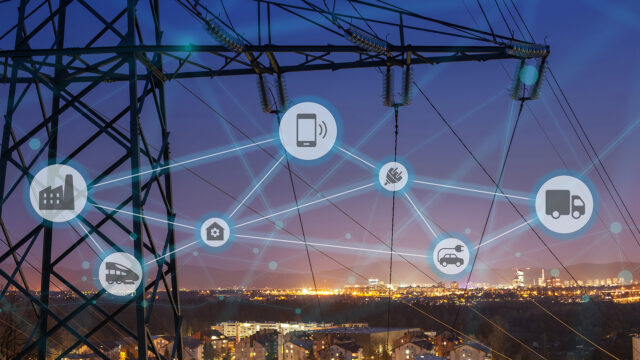
Artificial Intelligence is undeniably reshaping industries and how we live daily. But, along with this transformation, it’s quietly triggering a serious challenge: a huge, growing demand for electricity. The data centers powering AI systems are guzzling energy at an unprecedented rate. Experts warn that this could strain power grids worldwide, sparking tough questions about whether our infrastructure can keep up with AI’s rapid growth.
Just last year, in 2024, data centers globally consumed roughly 415 terawatt-hours (TWh) of electricity. To put that into perspective, that’s about 1.5% of all electricity used worldwide. The International Energy Agency (IEA) projects this will more than double by 2030—jumping to around 945 TWh, an amount roughly equal to Japan’s entire electricity consumption today. And, it’s AI that’s driving most of this surge.
The Power Behind the Processing
The magic of AI happens inside massive data centers, filled with specialized hardware designed for intense computational tasks. These centers rely on huge arrays of servers, storage devices, and networking equipment. Servers, equipped with CPUs and GPUs, are the real power hogs—making up about 60% of a data center’s electricity use. Then, there’s the cooling systems, which aren’t exactly energy-light either. They can consume anywhere from 7% of power in highly efficient hyperscale centers to over 30% in less optimized ones.
It’s hard not to be amazed by the scale here. A typical AI-focused data center can consume electricity equivalent to that used by 100,000 households. Even more striking, the biggest facilities currently being built are expected to draw 20 times that amount. This isn’t just a slight uptick in data center energy use; it’s a sharp, focused demand caused by the sheer complexity of AI computations.
Geographic Hotspots and Grid Pressure
While data centers take up a small slice of global electricity consumption overall, their localized impact can be huge. In the U.S., for example, nearly half of data center capacity is packed into just five regional clusters. This geographical concentration puts enormous pressure on the local power infrastructure.
Unsurprisingly, the U.S. leads global data center electricity use, accounting for 45% in 2024. China comes next at 25%, followed by Europe at 15%. The growth has been rapid, too—since 2017, global data center electricity consumption has increased by about 12% annually, roughly four times faster than overall electricity consumption.
Looking ahead, by 2030, data center power consumption in the U.S. alone could represent nearly half of the country’s electricity demand growth. This means data processing could consume more electricity than manufacturing all energy-intensive goods combined—like aluminum, steel, cement, and chemicals. It’s a staggering thought, really.
The Search for Power: Energy Sources and Challenges
Meeting this growing demand won’t be straightforward. A mix of energy sources will be necessary. Renewables and natural gas are expected to lead, given their cost and availability in major markets. The IEA projects nearly half of the additional data center electricity will come from renewables, with natural gas and coal still making up a significant portion.
But renewables like wind and solar come with a catch—they aren’t always available around the clock. That means backup power sources are essential. Nuclear power, including emerging Small Modular Reactors (SMRs) possibly available after 2030, is being looked at as a steady, low-emission option. Some tech giants are already investing in SMR development.
There’s also the issue of permitting delays for new power plants and grid upgrades. Data centers themselves face hurdles getting local permits, especially for backup generators and environmental reviews. Environmental regulations can restrict easy access to certain power sources, pushing reliance onto renewables that are harder to scale quickly.
Driving Force: The New Era of AI Chips
The hardware powering AI is itself fueling this power challenge. Server power density has more than doubled recently, from 8 kilowatts (kW) per rack to 17 kW in just two years, and it’s expected to hit 30 kW by 2027 as AI workloads get heavier. Training massive AI models like ChatGPT can require over 80 kW per rack. Nvidia’s latest chips, like the GB200, combined with their servers, might push rack densities as high as 120 kW.
Companies like Nvidia are trying to keep pace by designing chips that are both more powerful and energy-efficient. For instance, Nvidia’s Blackwell GPU microarchitecture claims to be 2.5 times faster and 25 times more energy efficient than previous models. These improvements are crucial to tempering power demands, though the overall volume of AI tasks continues to climb.
Policy and Progress: A Global Conversation
There’s a growing recognition among governments and industry leaders that coordinated action is needed. Countries hoping to harness AI’s benefits must ramp up investments in power generation and grid infrastructure. At the same time, boosting data center efficiency and flexibility is key. Dialogue between policymakers, tech companies, and the energy sector is becoming essential to find workable, sustainable solutions.
Groups like the IEA are actively researching this energy-AI relationship, offering data-driven insights to guide decision-makers. They’re also organizing global forums to encourage collaboration across governments, industry, researchers, and civil society.
AI as Part of the Solution?
Ironically, while AI’s power needs pose a big challenge, AI might also help solve some of it. AI can improve renewable energy forecasting, speed up fault detection in electricity networks, and optimize power distribution. Smarter AI systems in buildings could adjust heating and cooling dynamically, leading to significant electricity savings worldwide.
It’s clear the path forward will have to be multifaceted: investing in diverse new power sources, advancing energy-efficient hardware and algorithms, and crafting policies that support sustainable data center growth and grid integration. AI’s future and our energy landscape are deeply intertwined—perhaps inseparable.
So, while the idea of AI leaving us “in the dark” sounds dramatic, it’s not just about doom and gloom. It’s a complex puzzle, one that demands urgent attention but also holds opportunities for smarter, greener progress.










